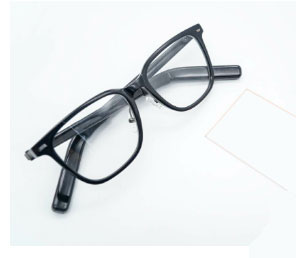AI Glasses Disassembly Guide: Thinnest PCB, Lightweight AI Chip, and Optical Module...
What are AI Glasses?
AI glasses are a new type of wearable device that have gained significant popularity following the surge in AI models in 2024. In terms of functionality, AI glasses are primarily used for voice interaction and photography. Compared to previous mainstream eyewear products like VR, the biggest improvement in AI glasses is the resolution of user comfort issues. Taking the highly anticipated Meta Ray-Ban second-generation product as an example, it weighs only 49g, less than one-tenth the weight of Meta's VR products. This breakthrough allows AI glasses to be used in a wide range of indoor and outdoor daily scenarios, breaking the previous limitation of VR being mainly used indoors.
AI glasses have garnered widespread attention, largely due to Meta and Ray-Ban launching their second-generation product, Meta Ray-Ban, in 2023. In April 2024, they rolled out AI features on a large scale, leading to a significant increase in monthly active users. As of July, the latest activation numbers showed a month-on-month growth of 25.2%. Industry insiders predict that the annual shipment volume could exceed 1.5 million units, with the product remaining in a state of continuous shortage.
Hardware Composition of AI Glasses
The core hardware of AI glasses includes the SOC chip, storage chip, camera, acoustics, battery, PCB, and assembly. Among these, the PCB, as the most critical substrate for carrying electronic components, is arguably the most important component. Most AI glasses use Flex PCB as the mainboard because it is the thinnest PCB, which is key to the lightweight design of AI glasses.
From an overall perspective, AI glasses are quite similar to ordinary black-frame glasses. Therefore, the design of components and electrical connections within the narrow and twisted space requires considerable ingenuity.
Thus, the placement and connection of these components must consider how to achieve the smallest and lightest design. The use of Flex PCB is also because it is not only the thinnest but also lighter, enhancing the user's wearing experience.
Functionality of AI Glasses
Generally, AI glasses are a multimodal artificial intelligence device. Users can activate the AI through voice commands. In addition to querying basic daily information such as weather, time, sports scores, and news programs, users can also use voice commands to activate the camera for more visual operations. For example, users can point the glasses' camera at a refrigerator and ask the AI what dishes can be made with the ingredients inside, how to match clothes, identify buildings in front of them, or inquire about the watering needs of a specific plant in the garden.
Additionally, AI glasses generally support translation functions, covering languages such as English, Spanish, Italian, French, German, and Chinese. Since the AI capabilities of the glasses rely on cloud computing, a certain response time needs to be accounted for.
Some AI glasses also support photography, music, and communication functions. They use open-ear headphone speakers, allowing users to interact via voice commands to specify artists, songs, or music genres. For specific features, please refer to the official website of the respective product.






